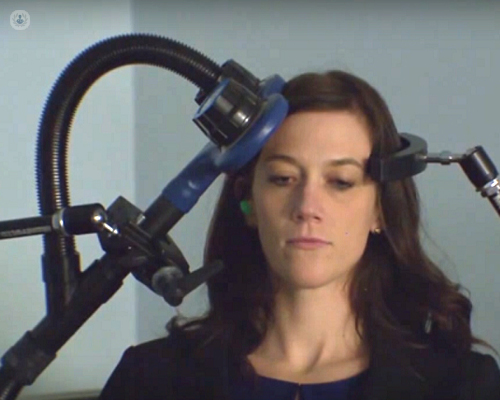

What is transcranial magnetic stimulation (TMS)?
Transcranial magnetic stimulation (TMS) is a non-invasive procedure used to treat depression and other forms of mental illness, including post-traumatic stress disorder (PTSD). TMS uses magnetic fields to stimulate nerve cells in the brain. Often TMS is used when other treatment options have been exhausted and unsuccessful.

Why is transcranial magnetic stimulation done?
TMS is performed on patients with depression that has not responded to other treatment options, such as medication or therapy.
What does transcranial magnetic stimulation involve?
During a session of TMS, an electromagnetic coil is placed next to the scalp close to the forehead. The device then sends magnetic pulses through the skull, stimulating nerve cells in the part of the brain linked to mood and depression. This is a painless procedure.
The science behind TMS is not completely understood, but the magnetic pulses have been shown to affect how parts of the brain work, helping to ease symptoms related to mood and depression. When you have TMS, you will normally have a series of treatments.
During treatment you are sat in a chair with ear plugs. The procedure lasts approximately 40 minutes, in which you will be fully awake.
How do you prepare for transcranial magnetic stimulation?
Transcranial magnetic stimulation will only be used following a physical examination and a psychiatric evaluation.
There are a few special circumstances where TMS might not be appropriate:
- You are pregnant or planning to become pregnant
- You take medication
- You have a history of seizures or epilepsy
- You have metal implanted devices (such as stents, hearing aids)
- You have other mental health problems
Aftercare following transcranial magnetic stimulation
Following a session of TMS, you can return to your normal activities immediately.
If TMS is successful, you might notice the symptoms of depression are eased, but this can take a few weeks of treatment.
Are there alternative treatments to transcranial magnetic stimulation?
As TMS is a fairly experimental treatment option, medications and therapy will be used first to help improve and ease symptoms of mental illness.
